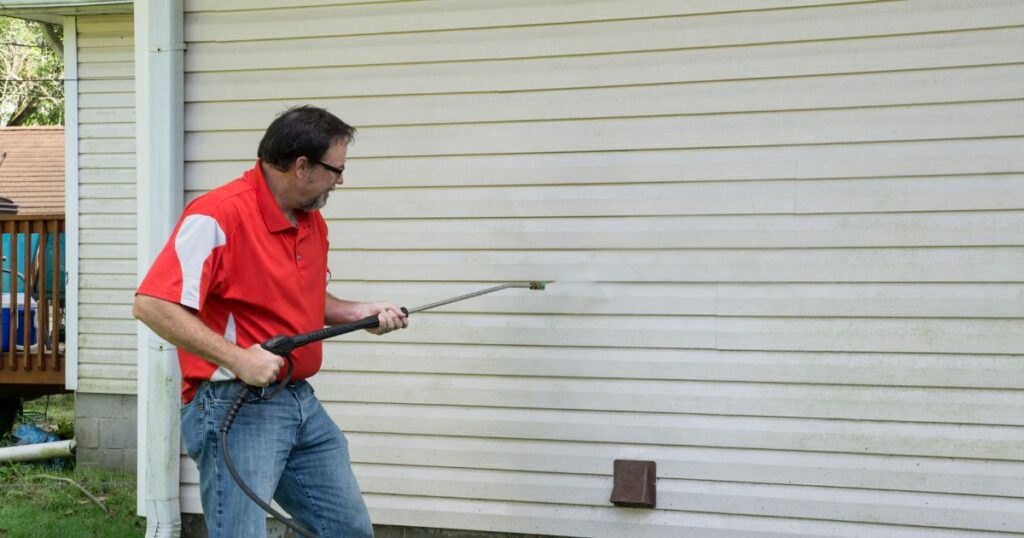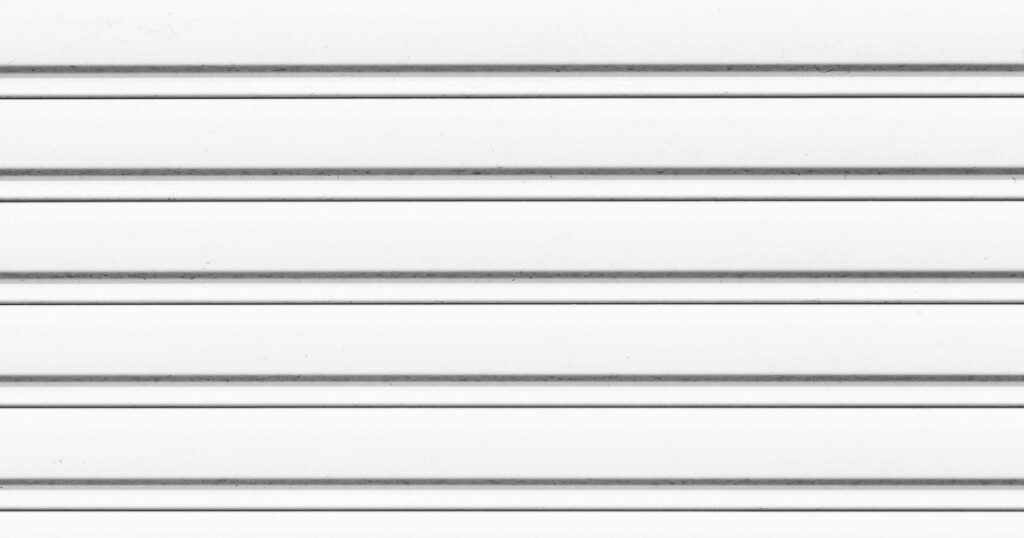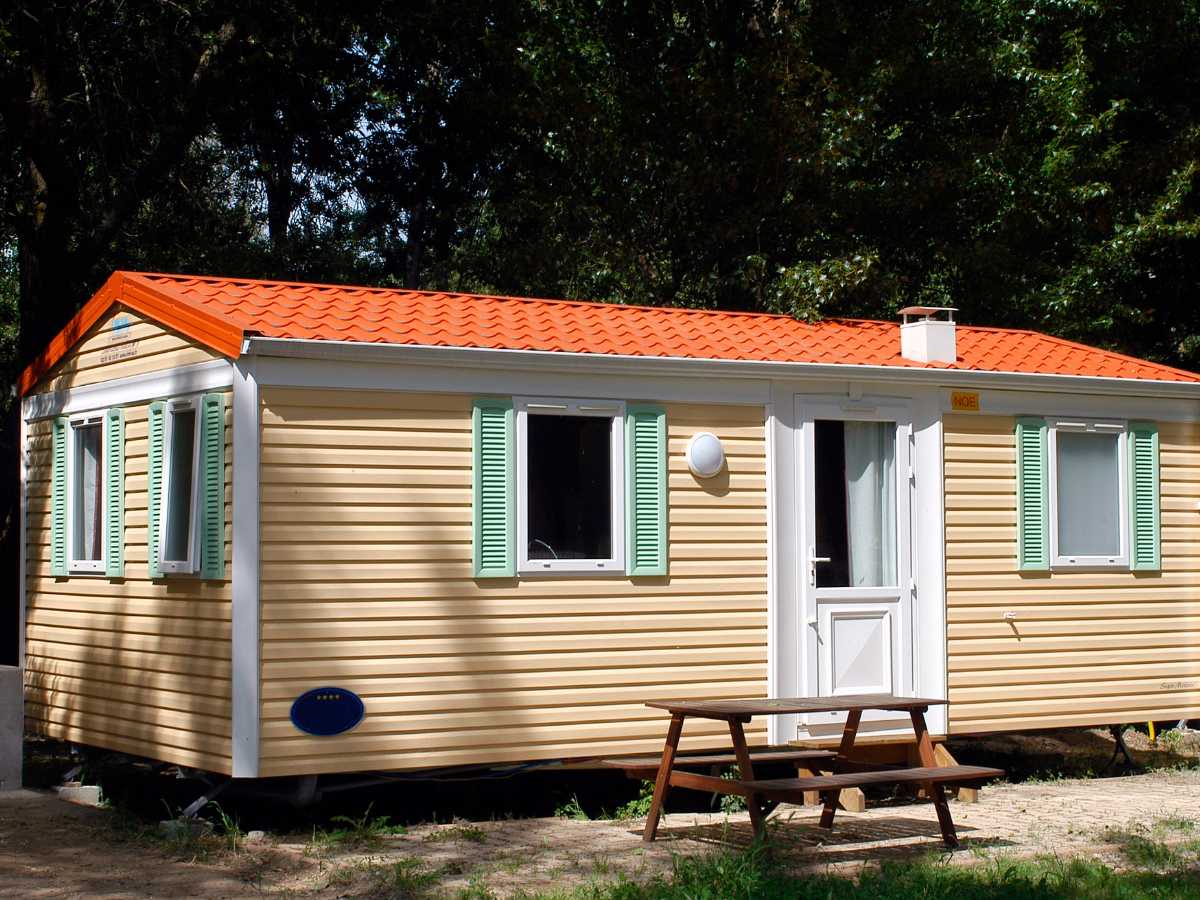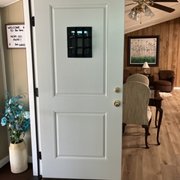Mobile homes have become popular. These affordable and flexible housing options provide many individuals and families a viable solution. However, one aspect that often goes unnoticed is mobile home siding.
Mobile home siding serves multiple purposes. Firstly, it acts as a protective barrier, shielding the home from external elements such as rain, wind, and harsh weather conditions. By preventing moisture infiltration, siding helps maintain the mobile home’s structural integrity, ensuring its longevity and durability. Additionally, siding enhances insulation, reducing energy consumption and lowering utility costs for homeowners.
Siding plays a significant role in enhancing the property’s aesthetic appeal. With a wide variety of siding materials, colors, and textures available, homeowners can choose a style that suits their taste and complements the overall look of their mobile home. This adds value to the property and creates a sense of pride and satisfaction for the residents.
Types of Mobile Home Siding

Vinyl Siding
Advantages: Vinyl siding offers numerous benefits. It is cost-effective, making it a budget-friendly option for many homeowners. Additionally, vinyl siding is resistant to moisture, rot, and insects, ensuring the longevity of the mobile home. It is also available in various colors and textures, allowing homeowners to customize their home’s appearance.
Disadvantages: While vinyl siding has advantages, there are a few drawbacks. It may not be as sturdy as other siding materials, making it susceptible to warping or cracking in extreme weather conditions.
Installation Process: The installation of vinyl siding involves attaching panels to the exterior walls of the mobile home. Starting from the bottom, each board interlocks with the next, creating a secure and seamless appearance. Hiring a professional for the installation is essential to ensure proper alignment and a high-quality finish. This guarantees that the vinyl siding provides optimal protection and enhances the home’s curb appeal.
Metal Siding
Advantages: Metal siding is renowned for its exceptional durability. It can withstand harsh weather conditions. It offers long-lasting protection for mobile homes, ensuring they remain structurally sound. Metal siding is also resistant to rot, insects, and fire, providing homeowners peace of mind. It comes in various styles and finishes, allowing for customization and enhancing the home’s appearance.
Disadvantages: Despite its many advantages, metal siding has a few drawbacks. One potential disadvantage is its susceptibility to denting when struck with force. Additionally, metal is a conductor of heat and cold, which means that without proper insulation, it may not provide the same level of energy efficiency as other materials. It is important to consider insulation options when choosing metal siding.
Installation Process: Installing metal siding involves securely attaching metal panels to the exterior walls of the mobile home. The panels are typically fastened with screws, ensuring a tight fit. Following the manufacturer’s instructions carefully during installation is essential to achieve optimal results. Homeowners can enjoy the long-term benefits of metal siding by providing proper installation, including its durability and low maintenance requirements.
Wood Siding
Advantages: Wood siding provides a warm and natural aesthetic, adding charm and character to mobile homes. It is highly versatile, allowing homeowners to choose from various wood species, grains, and finishes to achieve their desired look. Wood siding also offers good insulation properties, contributing to energy efficiency. Additionally, if properly maintained, wood siding can last for many years.
Disadvantages: Despite its appeal, wood siding does have some drawbacks to keep in mind. One disadvantage is its susceptibility to rot, moisture damage, and insect infestation, primarily if improperly maintained. Regular maintenance, including painting or staining and sealing, is necessary to protect the wood and maintain its longevity. Wood siding can also be more expensive than other siding materials.
Installation Process: Installing wood siding involves attaching wooden planks or panels to the exterior walls of the mobile home. The planks are typically secured with nails or screws, ensuring a secure and stable installation. Proper installation techniques are essential. Guidelines to prevent moisture infiltration and ensure the longevity of the wood siding. Regular inspections and maintenance are imperative to address any issues promptly.
Fiber Cement Siding
Advantages: Fiber cement siding offers numerous benefits. It is exceptionally resistant to fire, insects, and rot, ensuring the safety and longevity of the mobile home. It also provides excellent insulation, helping to regulate indoor temperatures and reduce energy consumption. Fiber cement siding has various colors and textures. It allows homeowners to achieve their desired aesthetic.
Disadvantages: While fiber cement siding has advantages, it is relatively heavy, requiring proper support during installation. Additionally, it can be more expensive than other siding materials, initially adding to the overall cost of the mobile home. Some homeowners may also find it challenging to install without professional assistance.
Installation Process: Installing fiber cement siding involves cutting and fitting the panels to the exterior walls of the mobile home. These panels are typically secured with nails or screws, ensuring a secure attachment. Follow the manufacturer’s guidelines and employ proper safety measures during installation. Professional installation is recommended to provide adequate support and alignment.
Factors to Consider When Choosing Mobile Home Siding
- Durability
Fiber cement siding is highly durable, designed to withstand various environmental conditions and potential impact damage. It resists warping, cracking, and fading, ensuring long-lasting performance for mobile homes.
- Maintenance Requirements
One of the advantages of fiber cement siding is its low maintenance requirements. Unlike wood siding, which may require regular painting or staining, fiber cement siding only needs occasional cleaning to maintain its appearance.
- Weather Resistance
Fiber cement siding offers excellent resistance against harsh weather conditions, including heavy rain, wind, and extreme temperatures. It protects the mobile home from moisture infiltration, preventing potential damage and ensuring its structural integrity.
- Energy Efficiency
With its insulation properties, fiber cement siding contributes to improved energy efficiency in mobile homes. It helps regulate indoor temperatures, reducing reliance on heating and cooling systems and lowering utility costs.
- Cost Considerations
While fiber cement siding may have a higher upfront cost than other siding materials, it’s durability and low maintenance requirements make it a cost-effective choice in the long run. It eliminates the need for frequent repairs and replacements.
- Aesthetic Appeal
Fiber cement siding has various design options to enhance the aesthetic appeal of mobile homes. It can copy the look of wood, brick, or stone, allowing homeowners to achieve their desired style and create a visually appealing exterior.
Preparation and Installation

Inspecting Existing Siding
Before proceeding with any repairs or replacements, inspect the existing siding thoroughly. Look for signs of damage, such as cracks, rot, or loose panels. This will help the extent of repairs needed or if a complete replacement is necessary.
Repairing or Replacing Damaged Areas
If specific areas of the siding are damaged, it is recommended to address them promptly. Repairing minor issues, such as small cracks or loose panels, can help extend the lifespan of the existing siding. However, if the damage is extensive or the siding is beyond repair, it may be necessary to replace the affected sections or consider a complete siding replacement.
Cleaning the Exterior
Before installing new siding, cleaning the exterior surface is essential. Remove any dirt, debris, or mildew that may have accumulated over time. Cleaning the surface ensures proper adhesion of the new siding and helps maintain its integrity in the long run.
Siding Installation Process
Gather the necessary tools and materials for the siding installation. This typically includes siding panels, nails or screws, a hammer or drill, a measuring tape, a level, and safety equipment such as goggles and gloves. Before beginning the installation, make sure proper safety measures are in place. Wear appropriate protective gear, use caution when working at heights, and follow safety guidelines for power tools.
Start by measuring and marking the layout of the siding, ensuring accurate placement and alignment. Install the starter strip along the bottom edge, followed by the siding panels, securing them according to the manufacturer’s instructions. Use a level to ensure a straight and even installation. Finish with trim pieces and corner caps to complete the look and provide a polished appearance.
Maintenance and Care

Regular Cleaning and Inspections
Regular cleaning is essential to maintaining the beauty and integrity of your siding. Use water and a detergent solution to remove dirt and grime. Additionally, conduct periodic inspections to identify any signs of damage or wear.
Dealing with Mold and Mildew
If mold or mildew grows on your siding, it’s essential to address it promptly. Clean the affected areas using a solution of bleach and water, or consider using specialized cleaning products. Taking quick action helps prevent further spread and potential damage to the siding.
Repairing Damaged Sections
If you encounter damaged sections of siding, such as cracks, dents, or loose panels, it’s essential to repair them promptly. Replace damaged panels or use appropriate sealants to fill gaps. By fixing issues early, you can prevent further damage and maintain the functionality of your siding.
Painting or Refinishing Options
Over time, you may consider painting or refinishing your siding to refresh its appearance. Make sure to choose paint or finish designed explicitly for your siding material. Proper surface preparation and application techniques will ensure a smooth and long-lasting finish, enhancing the overall look of your mobile home.
Hiring a Professional vs. DIY

Pros and Cons of Hiring a Professional
Hiring a professional can offer several advantages when it comes to siding installation. Experts have the necessary skills, experience, and tools to ensure a high-quality installation. They can also provide valuable guidance in selecting suitable siding material for your mobile home. However, professional installation can be costly and may require scheduling flexibility to accommodate their availability.
Pros and Cons of DIY Installation
Opting for a do-it-yourself (DIY) approach can appeal to those looking to save money. DIY installation allows for a sense of accomplishment and control over the process. However, ensuring proper installation requires significant time, effort, and research. Lack of experience and knowledge may result in subpar results or the need for costly repairs.
Budget Considerations
When making decisions about mobile home siding, consider your budget. Professional installation typically comes with higher upfront costs but ensures quality craft. DIY installation can be more budget-friendly, but factor in the prices of tools, materials, and potential mistakes that may require additional expenses.
Frequently Asked Questions

Common Concerns about Mobile Home Siding
Regarding mobile home siding, homeowners often share concerns about various aspects. One primary concern is the durability of the chosen siding material. Homeowners want to ensure the siding can stand on time and resist rain, wind, and impact damage. Another concern is the maintenance requirements of the siding. Homeowners want to know how much effort and resources will be needed to keep the siding in good condition.
Weather resistance is also a common concern, as homeowners want to ensure that the siding can withstand extreme weather conditions without warping, cracking, or fading. Additionally, energy efficiency is a concern for many, as they want to choose a siding material that helps insulate the mobile home and reduces energy consumption. Lastly, cost considerations are another common concern. Homeowners want to know the upfront and long-term costs associated with different siding options to make an informed decision that aligns with their budget.
Expert Answers and Advice
As experts in the field, we are here to address these concerns and provide valuable advice to homeowners. We understand the importance of durability in mobile home siding and can guide homeowners in choosing materials known for their longevity and resistance to damage. We can also provide insights on the maintenance requirements of different siding options, helping homeowners understand the care needed to keep their siding in optimal condition.
Regarding weather resistance, we can offer recommendations based on the specific climate of the area and the performance of different siding materials under varying weather conditions. Energy efficiency is another area of expertise, and we can advise homeowners on siding materials that provide adequate insulation and contribute to energy savings. Lastly, we understand the significance of budget considerations. We can provide information on the upfront costs, long-term value, and potential return on investment of different siding options, allowing homeowners to make informed decisions that align with their financial goals.
Right Siding for Mobile Homes
Choosing the right siding for mobile homes is an important decision that can significantly impact your home’s aesthetics, durability, and overall value. With the information and insights provided, here are some final thoughts and recommendations to guide you in this process.
Thoroughly evaluate your specific needs and priorities. Know what you want. Consider factors such as your budget, desired level of maintenance, climate conditions, and the desired visual appeal. This will help you narrow your options and make a more informed decision.
Consult with professionals or experts in the field. They can provide valuable insights into the suitability of different siding materials for your mobile home, considering factors such as structural compatibility and local building codes.
Additionally, consider the long-term implications of your decision. While upfront costs may be a consideration, it is essential also to weigh the durability and longevity of the siding materials. Opting for high-quality materials may lower maintenance and replacement costs over time, ultimately providing a greater return on investment.
Lastly, don’t forget to consider the visual impact of the siding. Choose a material and design that complements the architectural style of your mobile home and reflects your taste. Aesthetics play a significant role in enhancing your home’s overall curb appeal and value.



























